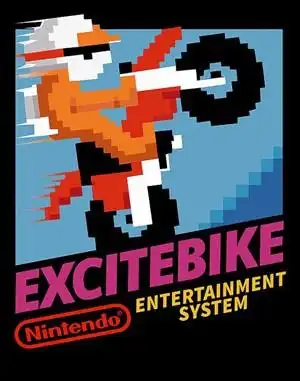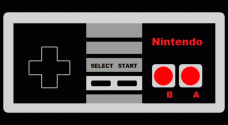Dust off that old grey box in your memory – or maybe you still have one hooked up! Because today, we're talking about a true pioneer of pixelated power sports: Excitebike. For many of us, this Nintendo Entertainment System gem was one of the first times we felt the thrill of speed and the agony of a bad landing, all from the comfort of our living room floor.
Released by Nintendo in the mid-1980s, Excitebike wasn't just another racing game. It was a physics lesson disguised as pure, unadulterated fun. It taught us about momentum, angle, and the critical importance of hitting that ramp just right.
The Thrill of the Ride: Gameplay Mechanics
What made Excitebike so captivating? It boiled down to a few key elements that were surprisingly deep for the era:
- Physics-Based Jumps: This wasn't just holding down 'accelerate'. You had to control your bike's angle in the air using the D-pad. Too nose-down and you'd wipe out on landing. Too nose-up and you'd lose precious speed. Mastering the landing was key to winning.
- Overheating Engine: A simple but effective mechanic. Holding down the turbo button for too long would cause your engine to overheat, forcing you to stop and cool down. It added a layer of strategy – when to boost, and when to conserve.
- Obstacles and Opponents: Navigating ramps, bumps, and avoiding other riders (or strategically taking them out by bumping them from behind) kept every race interesting.
Modes That Kept Us Playing
Excitebike offered a few ways to play, each with its own appeal:
- Selection A (Solo): A time trial against the clock. Simple, pure, and great for practicing lines and landings.
- Selection B (Vs. Computer): Racing against AI opponents. More chaotic, requiring you to not only manage your bike but also navigate traffic.
- Design Mode: This was arguably the most revolutionary part of
Excitebike. The ability to design your own tracks! Using a simple interface, you could place ramps, bumps, coins, and other obstacles. Saving these creations (if you had the Famicom Data Recorder, or just writing down the codes!) felt like having your own personal game development studio. This feature was way ahead of its time and offered near-infinite replayability.
Why Excitebike Endures
Decades later, Excitebike is still remembered fondly as an NES classic. Its simple premise is instantly understandable, but the subtle physics and strategic elements give it surprising depth. It's a game that's easy to pick up but challenging to master, embodying that perfect retro gaming sweet spot. Its legacy can be seen in later Nintendo racers and its continued availability on modern platforms through collections and online services.
How to Revisit This Classic
Feeling the urge to hit those ramps again? You can often find Excitebike available on Nintendo's current online services (like Nintendo Switch Online) or through various retro game collections on modern consoles. Emulation is another popular route for experiencing classic NES titles like this one on PC or other devices.
Frequently Asked Questions
- When did Excitebike first come out? The original
Excitebikewas released in Japan for the Famicom in 1984 and in North America for the NES in 1985. - Is Excitebike just about racing? While racing is the core, the game also features a solo time trial mode and, notably, a track design mode that lets you build your own courses.
- Why is the track editor important? The track editor was a groundbreaking feature for its time, giving players creative control and significantly extending the game's replay value long before custom content became common.
Whether you spent hours perfecting your landings or building the craziest tracks imaginable, Excitebike holds a special place in the hearts of many retro gamers. It's a reminder that sometimes, the most engaging experiences come from simple mechanics executed brilliantly.


